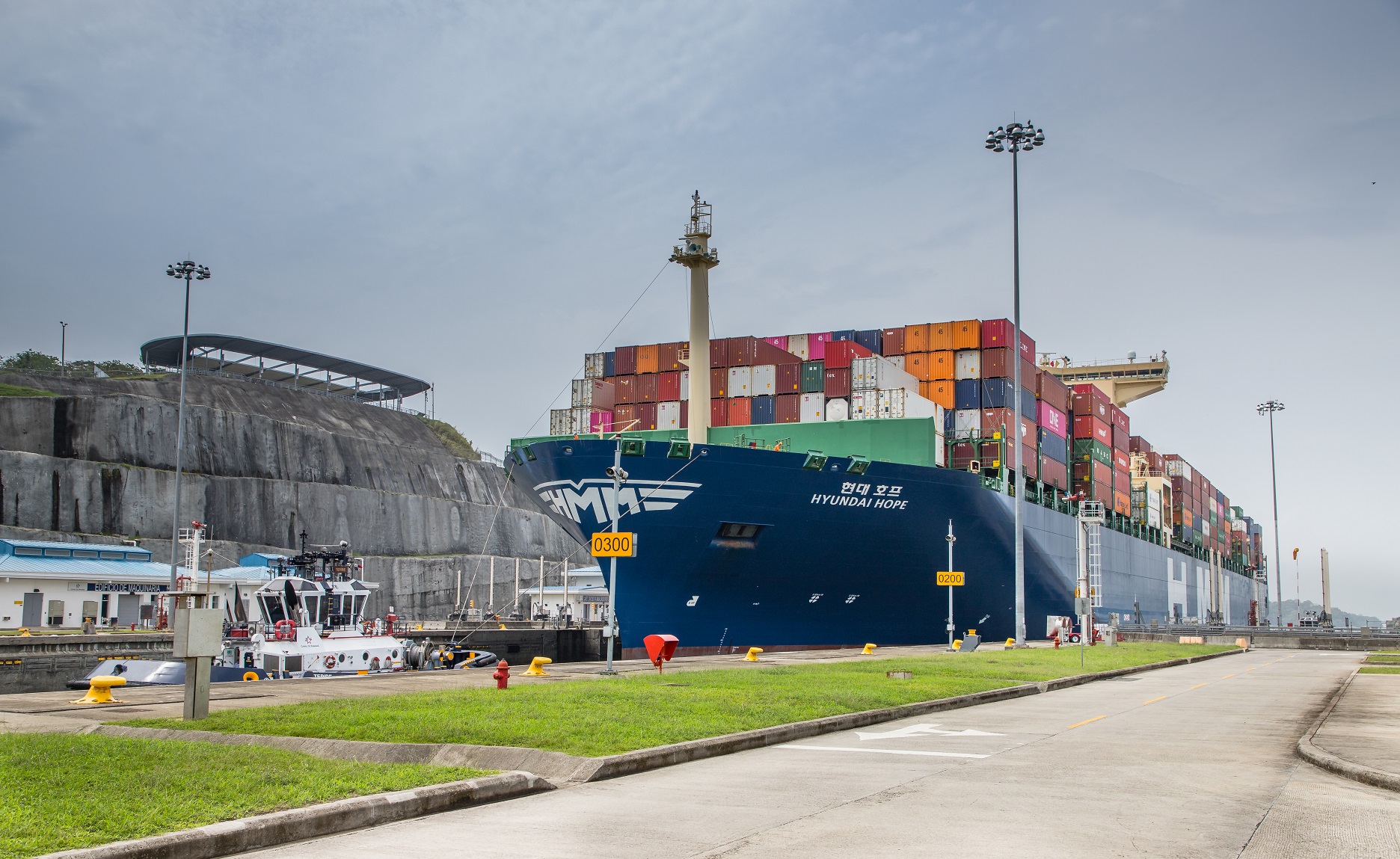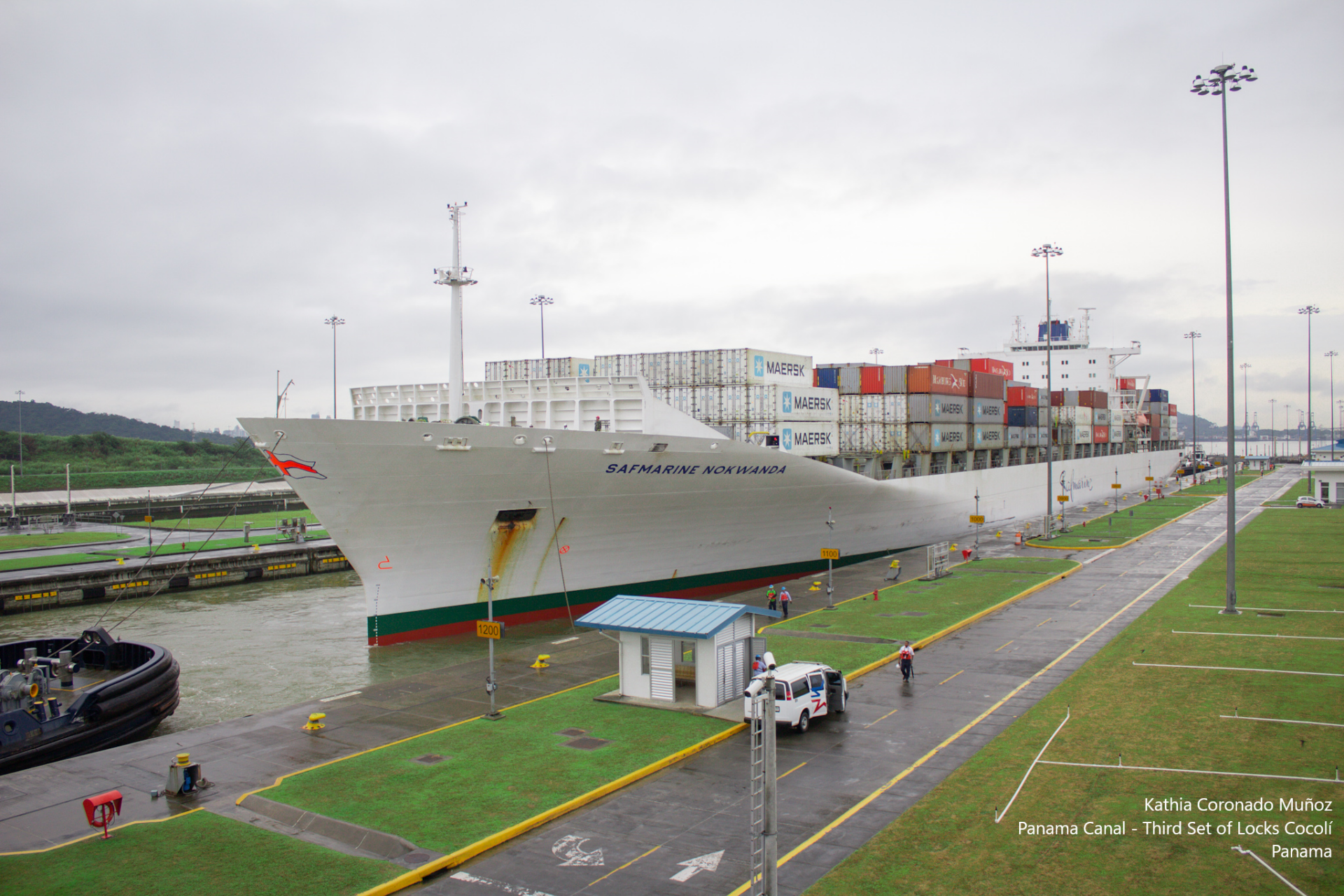The Panama Canal is a vital shipping route connecting the Pacific and Atlantic oceans that serves as a conduit for about 5% of global trade annually. But navigating the canal’s complex toll system and difficult regulations while avoiding delays is the biggest challenge for ships making the passage.
Inchcape Shipping Services provides end-to-end port agency services for the Panama Canal and last year handled around or 1100, or 9%, of a total of 12,500 ship transits on the 82-kilometre waterway, covering all types of vessels from bulk carriers and containerships to LNG carriers and oil tankers.
This translates to an average of 35 transits per day that entail ships being lifted and lowered 26 metres via a lock system at either end of the canal to pass through the pristine freshwater Gatun Lake, with a third wider lane of locks opened in 2016 to allow transit of larger neo-Panamax vessels.
However, this figure can vary widely as the daily volume of ship traffic is dependent on the demand for and availability of transit slots, planned and unplanned canal maintenance, and seasonal draft restrictions.
The Panama Canal Authority’s (ACP) highly differentiated toll payment regime, which offers pre-booking of 24 daily transit slots as well as non-booked and auctioned slots, is intended to determine the value of the route relative to the operational and economic realities of running the canal.


‘Unpredictability’
“The biggest issue for ship operators is unpredictability on waiting times to transit the canal, as the transit schedule cannot be properly predicted prior to 96 hours ahead of time due to registration of ships in the transit reservation system,” says Inchcape’s Area General Manager for Central America, John Willemsen.
He points out that waiting times for the approximate 18-hour transit along the canal have increased from around three days to as much as two weeks over the past few years.
“This means delivery/loading windows and voyage costs can be impacted by waiting times, as well as pre-booking fees and auctions of transit slots,” he adds.
“There is also an extensive number of largely inflexible rules and regulations to maintain safety standards on the canal. So our job is to take the commercial reality of each client and translate this into a solution within the canal rules.”
The ACP has recently shifted focus from maximising transits along the canal to managing variable demand by making additional non-booked slots available, while taking a more segmented approach to pre-booking rules that included an increase in the reservation cost upwards of 15%.
The other alternatives for ships using the canal are to secure transits on a first-come, first-served basis – a more traditional model for allocating slots – or participate in auctions for other daily slots made available where the toll charge for a transit can rise to over $1 million through competitive bidding.


Complex toll calculation
But Willemsen points out this system can lead to a situation where a ship with a newly fixed cargo is unable to find a slot as all pre-bookings are taken for the optimal transit date, which means the vessel has to compete for available future slots at auction or join a queue of ships when waiting times are highly variable – risking cargo delivery delays and possible demurrage costs.
He says making speculative long-term slot reservations could mean losing money on unused bookings or may supersede canal pre-booking regulation changes.
Taking an alternative longer route around the tip of South America via the Magellan Strait would extend the journey time by eight to nine days, while also increasing fuel costs and emissions. Infact, the Panama Canal’s so-called Green Route contributed to a reduction of 16 million tonnes in CO2 emissions from shipping last year – an increase of 3 million on 2020.
Inchcape’s Marine Service Manager for Central America, Fernando Ayala, says it is “very difficult to predict” canal transits, which can vary between 30 and 42 ships per day, and “toll calculation is a very complex process”.
Transit costs for a typical laden neo-Panamax LNG carrier are around $500,000 in the case of a pre-booking that precludes auction costs.
“Advance planning is critical to expediting canal transits efficiently, so it is important to determine beforehand factors such as the vessel size and mooring configuration, radar and other equipment onboard to ensure compliance with IMO and Solas safety regulations, as well as calculate tolls for pre-payment,” he says.
Close communication
To achieve this, Inchcape’s local port agency team is in constant communication with the client and ship’s master over a week before arrival to obtain this key information for inputting into the ACP’s data system.
Making ship operators aware of the authority’s regulations is important to avoid misdeclaration in the documentation process that in some cases has led to vessel arrests and heavy fines, Ayala says.
“In addition, Inchcape provides vital information for the ship such as transit slot availability, updates on canal movements with expected waiting times, weather forecasts and notification of any canal rule changes in the run-up to arrival to secure a smooth transit in support of effective voyage planning,” he adds.
As well as maintaining close communication with updated information to mitigate cost, timing and legal risks, Inchcape offers a range of services in connection with canal transits including underwater hull inspections, secure transport of crew, maintenance, tally services to verify the condition of sensitive cargoes, port captain services and third-party liner agency.
Co-ordinating services
Ayala points out there is a wide range of activities that can be performed prior to a canal transit, which can include bunkering, maintenance, inspections, hull cleaning and crew changes.
“All of this requires effective co-ordination to ensure a successful activity without impacting the voyage plan,” he says.
Surveying the condition of the hull, as well as rudder, propellers and anodes, is required to assess possible damage and determine whether there is biofouling that can negatively affect fuel consumption by increasing drag in the water.
Inchcape has adopted cutting-edge technology for this purpose by using remote-controlled drones to perform underwater hull inspections that give immediate visibility on condition with high-definition video that can be streamed via the cloud, while also enhancing the safety of such operations by eliminating the need for divers.
Spare parts delivery for maintenance and procurement of other services is facilitated by Inchcape through its extensive local network of vendors that are vetted for ethical compliance and aligned with the company’s cost-effective sourcing strategy to maximise value for the client.
Crew changes
Inchcape even runs its own fleet of vehicles fitted with wi-fi connectivity and trackers, using trained drivers to provide secure transport for ship personnel. Health and safety protocols are strictly followed for safe boarding and disembarkation with crew changes at various terminals and anchorage positions.
This is part of standard QHSSE practice in compliance with global regulations that is implemented by Inchcape worldwide, as well as anti-corruption practices under the UK Bribery Act and international maritime law.
Inchcape’s team in Panama, which comprises nearly 50 experienced staff, is part of its wider Central America regional network of 15 offices covering 119 ports. It is also the only port agency in the remote ports of Puerto Armuelles and Chiriqui Grande, which support tanker shipments from Petroterminal de Panamá (PTP) that serves a 130-kilometre oil pipeline.